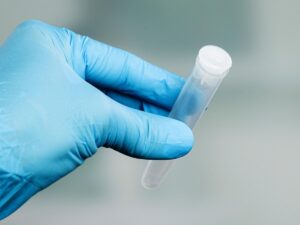Feels Like Sperm Is Blocked – Sperm Tube blockage
Male Infertility is one of the most common diseases these days, and the main reason is EDO. Do you Feels Like Sperm Is Blocked? You asked well we have designed this article for you.
Table of Contents
Feels Like Sperm Is Blocked – Sperm Tube blockage
When two ducts transfer semen from the seminal vesicles to the urethra, it escapes the penis owing to the ejaculatory reflex. An obstruction or blockage in one or both ejaculatory ducts may prevent sperm from entering the ejaculate. In some cases, the vents are blocked from birth (known as congenital blockage), whereas the block is acquired in others.
Dr. Omar has documented numerous types of EDO. Complete or classic EDO is distinguished by duct blockage and low ejaculate volumes in the absence of sperm or azoospermia as a presenting symptom. Partial obstruction of one duct or a block of both ducts in an incomplete or partial EDO is a partial obstruction of one duct or a union of both ducts.

However, although there is evidence of ejaculated sperm, in this case, the amount, count, and motility are all typically poor. Functional EDO, which appears as regular ejaculatory duct obstruction, lacks anatomic evidence of a physical blockage in the ejaculatory duct.
How is Sperm Tube Blockage Diagnosed?
A detailed sexual and medical history, a physical examination of the testicles and genitalia, and laboratory testing that analyses the semen analysis and reproductive hormones, such as follicle-stimulating hormone (FSH) and testosterone levels, among other things, are used to diagnose EDO.
Transrectal ultrasonography (TRUS) is the critical diagnostic tool to use when it comes to identifying suspected EDO cases. Dilated seminal vesicles, cysts blocking the ejaculatory ducts, and calcifications in the ducts may be detected and treated during this operation. However, as Dr. Omar’s research has shown, TRUS alone is not sufficient to establish a diagnosis in many cases.

He realized that TRUS, like taking a snapshot image with a camera, is highly successful in showing the existence of a blockage. However, it should be combined with other diagnostic processes that give a more “dynamic” portrayal of the system to deliver an accurate diagnosis.
To mention a few, these additional procedures include seminal vesicle sperm aspiration, TRUS-guided seminal ventriculography, ejaculatory duct chromotubation, and ejaculatory duct manometry.
Seminal vesicle sperm aspiration is a test that involves extracting fluid from the seminal vesicle to see whether sperm is being generated. This demonstrates that impediments are due to a large amount of sperm in the seminal vesicle fluid.
However, this method does not help determine the size of the blockage or discriminate between a physical backlog and an obstruction creating a functional limitation.
Dr. Omar may be able to distinguish between EDO cases caused by a blockage that can be remedied surgically and dysfunctional and will not respond to surgery using chromotubation and ejaculatory duct pressure measurements (manometry). This allows him to avoid unnecessary surgery wherever possible.
